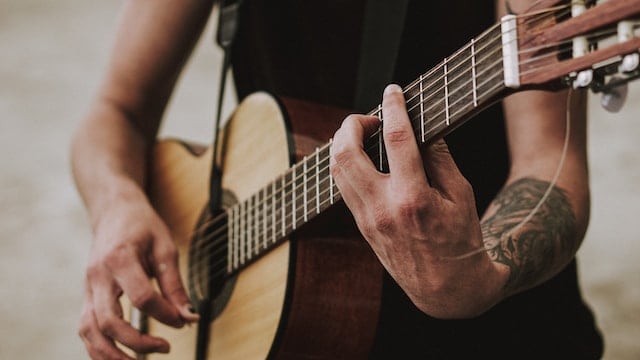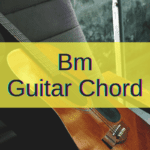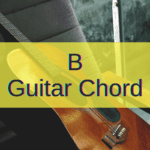Barre chords are, perhaps, every guitar player’s first steep learning curve. Yes, before we start to play F major or B minor, all the chords seem difficult but, somehow, doable.
Yet, when we are faced with this first big stone on the way, some of us put down the guitar because we’re just “not cut for it”.
Believe me, I’ve been there too and I know exactly how it feels.
Yet, that would be a sad ending to what could otherwise be an amazing love story between you and the instrument full of years of blissful playing and endless joy.
That’s why I poured decades of guitar-playing experience into the shape of an article to help you overcome the first big challenge on your guitar without feeling disheartened or defeated.
Learning barre chords takes time and effort. Yet, instead of thinking of it in a time frame, it is important to think of it as in practice hours. Indeed, the more you practice (not only barre chords, but guitar playing in general), the closer you’ll be to mastering the technique.
Come on in; don’t be shy. Read on! In the next paragraphs, you’ll find all the information you need to speed up the learning and mastering of barre chords. Plus, you’ll also find some alternative techniques to “fake it till you make it”.
I know exactly how you feel and I’m glad to tell you that you’re in the right place at the right time.
Go grab your guitar because there is a whole lotta playing goin’ on ahead of us!
Is Learning Barre Chords Really Necessary?
This was a line that came out of my mouth once too. I remember looking up at my guitar teacher when I was around ten years old and asking her that as a plea with my watery eyes.
She encouraged me to go on and, many years later, I was the one saying that with practice, guidance, and patience, anyone can play them to one of my students.
I meant that then and I still do now. Although you can find ways around most barre chords, once you master them, they will become an integral part of your playing.
Moreover, very soon you’ll find out that barre chords are an easy alternative to many other, more difficult, and demanding chord shapes. They will help you resolve many musical difficulties with known shapes.
Furthermore, these shapes are only a handful that can transform into any chord you need including major, minor, seventh, and minor seventh chords.
So, although not strictly necessary, they are a huge leap forward for any guitarist that translates into more freedom to create and play the music you love.
How Long Does It Take to Learn Barre Chords?
I’m not going to lie to you; learning barre chords takes time and effort. It is the first big milestone you need to conquer to have prosperous and rewarding playing experiences with your guitar.
That being said, it’s not a rare skill among guitar players. Indeed, most of us struggle with them at the beginning and then play them all our lives.
You can think of it as riding a bicycle. You will very definitely fall many times from the bike but once you learn the skill, you can ride bicycles, and motorcycles, or even become a moto GP racer if you practice hard enough (and are crazy enough to ride at that speed)!
But back to barre chords, they are something that, if you invest time, hard work, patience, and practice a lot, shouldn’t take you more than one year to master. This is, of course, relative to every player’s abilities, talent, and commitment.
What I can tell you (after playing guitar for well over two decades) is that you can continue to polish your technique and use the same barre chord principle to play rockabilly riffs, build your funk chops, or just play good old rock n’ roll using Chuck Berry-approved licks.
Yes, barre chords can bring more than meets the eye to your playing. So, in a sense, you never stop learning and developing that skill; it grows to make you a better player.
Do Barre Chords Get Easier with Time?
This is the question you’ve been waiting for the entire article and the answer is absolutely yes. Barre chords get much easier with time.
This responds to two important reasons:
- Your fretting hand gets stronger – One of the main reasons we struggle with the guitar, especially at the beginning, is that our fretting hand needs to use muscles it’s not used to. Yes, we have to build strength in muscles we never used so much before. This will happen with time, so the more you play, the stronger your hands will be, and the easier it will be to play barre chords.
- The myelination of your brain’s pathways – Okay, let’s get a little technical here. This is a concept that applies to guitar playing and practicing in general. Our brain works as an information highway. Let’s say that the information travels through tunnels. The more you use the same tunnel, the stronger it becomes and the better it conveys the information. This process is known as myelination and it happens naturally as we practice. So, science confirms: the more you practice barre chords, the better you’ll be at it. You can check here to learn more about myelination.
7 tips to learn barre chords faster
Speaking of the skills needed to play barre chords faster, let’s see my selection of the best 7 tips to master barre chords easier and faster than ever.
There’s a whole lot of playing to do, so get your guitar and let’s get started!
1. Mind the Guitar’s Action
This is a game-changer for many of us. Moreover, it is one of the main mistakes of my beginner students.
You have to be able to play the guitar you’re trying to learn with effortlessly so your fight can be only with your fingers and brain. If the strings on your guitar are too high, you are going to need to apply more effort to obtain the same results making it harder on yourself.
But wait, not so fast! How do I know if the strings in my guitar are too high?
Well, simply look at it from above and check the distance between the frets and the strings at the 12th fret. If it is bigger than, let’s say, a millimeter and a half, then it’s too high.
Although you might be tempted to go DIY on the task and there are a million YouTube videos about how to do it, my suggestion is that you take your guitar (the one you’re learning with) to be professionally set up with fresh strings.
Believe me; you’ll notice the difference in seconds.
Yes, I know, you’re welcome.
2. What Side of your Index Finger You’re Pressing down with?
Your index finger is not the same on every side. On the opposite, the bottom part (the one that ends in your palm) is more uneven and a little bit less fleshy.
So, what we need to check is that we are not pressing down with that part of our finger, but with the outer part of it which is closer to the bone. It is also more even and has more meat so it can press the strings easier and better.
“How do I use that part of the finger?” You might be asking yourself and scratching the top of your head with the pick.
Well, simply rotate your index finger on your fretting hand slightly toward your thumb (left if you’re right-handed and right if you’re left-handed). You’ll see that this slight change will make your index finger a much stiffer human capo to work with.
3. Mind the Thumb
Do you know what the best position for your thumb is when playing barre chords? Well, this is something many people overlook because are too busy paying attention to the index and other fingers of the fretting hand.
Yet, that is a huge mistake because your thumb is paramount to making the right pressure on the neck to make the barre chords sound amazing.
Worry not; you’re at the right place to learn it right now.
The best position for your thumb is right between your index finger and your middle finger if you’re playing a major chord. This means it should be exactly behind the fret you’re making the barre chord at.
Use that as a guide and, before you know it, your brain will be doing it for you automatically.
4. Use the Right Muscles
This is another game-changer for many people: what are the muscles you’re using to make the pressure with? If the answer is the tip of your fingers or the index finger, then the answer is incorrect.
Yes, the muscle that you need to grow stronger is the one that is between the thumb and the index finger. That is the one that needs to do all the work while playing barre chords.
A great tip is to put your fingers on the guitar in the shape of any major barre chord and press softly using this muscle as your main driving force for ten seconds. Let go and start again.
Repeat this for at least a minute and then take a minute off. It will help you command your brain to make the pressure with that muscle instead of your fingers.
5. Nylon is Friendlier than Steel
If you’re lucky enough to have a nylon-string guitar around, learning to play barre chords on it is much easier. In fact, learning to play the guitar with a nylon-string instrument is what I always recommend the most.
The reason is very simple: nylon strings are way friendlier on the skin and the hands than metal is. This is not a random occurrence; it is because of the tension and the material.
Therefore, learning your chops, especially at the beginning, on one of these guitars will help you master barre chords easier and faster.
6. Look for the Dead-Sounding String
The sixth pro tip to learn how to play barre chords faster and easier is to find the dead string.
Yes, when we place our index finger on the strings to play a barre chord, we can usually make at least some of them sound the right way. Therefore, we have to find and fix only those that are ruining our effort.
Usually, the most difficult ones are the bottom two strings (B and E).
So, for this technique, all you have to do is form a barre chord and play every string from the bottom to the top. If any string sounds dead, try and fix it on the spot, and don’t move on until it sounds right.
This way, you’ll know where to direct your efforts specifically.
7. The Stacked-Finger Technique for Minor Chords
When I started out with barre chords, I was having much trouble with a specific chord that is very common because it is a part of many scales: F sharp minor (F#m).
Yes, F sharp minor was my nemesis for months and, although I made a huge effort and pressed with all my strength, I couldn’t make the third string sound correctly.
So, I came up with an alternative that, to be honest, I still use to this day and has helped me a lot: I use the middle finger to help me press down.
Yeah, don’t look at me like that! Two fingers can easily make more pressure than one!
This is how the technique works: form an F sharp minor with your fretting hand. Now, line up your middle finger parallel to the index finger and press down with both of them.

You can utilize this technique anywhere on the neck and the result will be the same: an added source of power to make that third-string sound the right way.
Alternatives to Avoid Barre Chords When You Are Playing
Now that we’ve seen the 7 tips to play the barre chords easier and faster, it is time to see some alternative techniques to start cheating… I mean; to play the chords you need before mastering the barre chords.
Power Chords
Power chords are reduced alternatives that can help you play major and minor chords anywhere you want on the fretboard.
- Power chords only need two notes, therefore can replace minor and major chords
- Because they only have two notes (the root note and its fifth), they can be played with obnoxious levels of distortion remaining perfectly clear.
- With only two notes you can’t use them to make more complex chords like seventh or minor seventh chords.
- They don’t sound big and full without distortion.
- Knowing a very simple shape, you can use them all over the fretboard to create the chords you want.
- The root note (the lowest) will tell you the name of the chord.
This is what they look like:
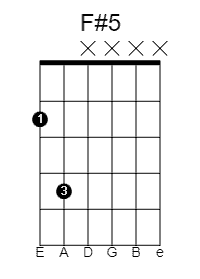
Half-Barre Chords
Half-barre chords are great shapes to use to replace barre chords.
- You can work your way to learning full barre chords with increasing difficulty.
- They let you play any kind of chord you need including seventh chords.
- You can learn simple shapes and repeat them all over the fretboard.
- The root note is the one played on the first string (the thinnest string on your guitar). It gives the name to the chord.
This is what they look like:
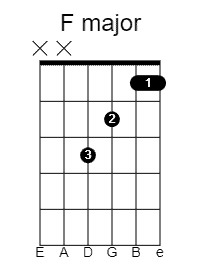
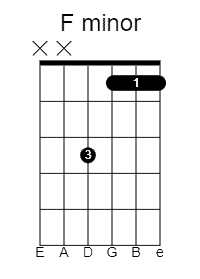
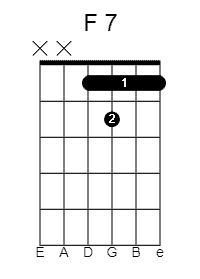

Just learning these shapes will let you play these chords all over the fretboard.
Chord Blocks
Chord blocks are a resource that I took from the world of jazz to make my life simpler. Yes, you read that right: I took a resource from the jazz world to make things easier!
- Chord blocks are derived from a shape you already know: the D major open chord.
- They allow you to play all kinds of chords on the fretboard moving the root note (the D string) using your index finger.
- No barre chord technique is used to create them.
- They require quite a bit of stretching from your fretting hand.
This is what they look like:
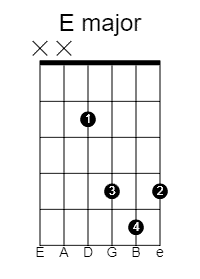
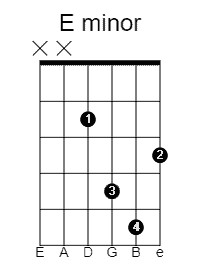
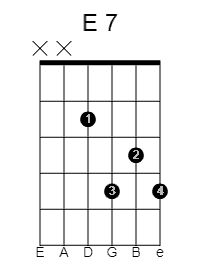
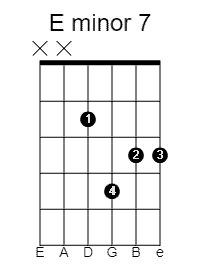
The only caveat about these chords is that if you don’t have a big hand, they can be a tad hard to play since distances can be long.
The Bottom Line
Every guitar player is different and each of us is on a very distinct, personal journey. Therefore, thinking of a time frame to learn a specific skill is not the most adequate. On the other hand, it is important to think of it as “practice hours” rather than elapsed time.
The only thing that is certain in this regard and that applies to all of us is that with practice you can conquer anything on the guitar and the only technique you’ll never master is the one you stop practicing.
So, follow the advice in this article and give your barre chords enough practice hours until they become another technique in your arsenal.
Happy playing!

Hello there, my name is Ramiro and I’ve been playing guitar for almost 20 years. I’m obsessed with everything gear-related and I thought it might be worth sharing it. From guitars, pedals, amps, and synths to studio gear and production tips, I hope you find what I post here useful, and I’ll try my best to keep it entertaining also.

